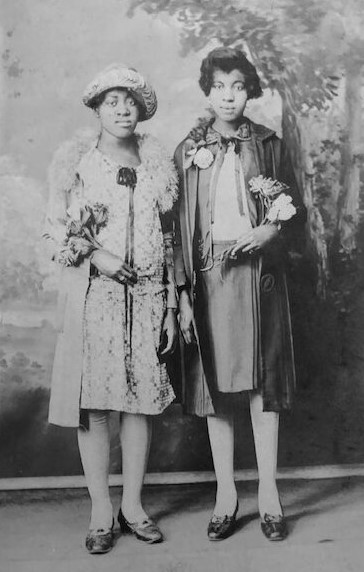Preserve the Legacy
Ozella Carter Harris & Mary Kate Carter
 Links to our past can connect us with one another, as the past has shaped who we are today. We can learn a lot about past cultural influences and their current relevance to our communities through preserving historic African-American cemeteries. Such preservation facilitates the discovery of missing links in American heritage, gaining us better understanding of our interconnections. The untold stories documented by these sites as well as their historic importance and cultural significance are immeasurable.
Links to our past can connect us with one another, as the past has shaped who we are today. We can learn a lot about past cultural influences and their current relevance to our communities through preserving historic African-American cemeteries. Such preservation facilitates the discovery of missing links in American heritage, gaining us better understanding of our interconnections. The untold stories documented by these sites as well as their historic importance and cultural significance are immeasurable.
Unfortunately, many of these burial grounds are unknown and often located in hidden and unrecognizable areas. Official burial and interment records for those buried there are scarce or nonexistent. Moreover, many sites have already vanished following construction or development, resulting in the erasure of history. A large part of preserving a historic African-American cemetery is compiling accurate records of the names, birth and death dates, and life histories of the people buried there. Preservation also includes gathering old stories from descendants and any available records relating to the cemetery and its historic importance and cultural significance. Without these kinds of preservation efforts, the full stories of these historic spaces and those buried there will not be recorded in American history.
Enslaved people in the United States held on to their traditional African culture in many ways—through song, religion, soil cultivation, and even food. So too did they follow these traditions when laying family members to final rest. Throughout the historic Pierce Chapel African American Cemetery located in Midland, Georgia are pieces of white quartzite and shards of pottery. In African culture, white is the color most commonly used to celebrate a life. Yucca plants have been identified as grave markers as have periwinkle plants, which signify that a spirit lives on. Preserving such cemeteries thus preserves traditional African culture and helps connect enslaved Africans and their descendants.
The Pierce Chapel African American Cemetery is a significant historical landmark not only for my family—as my maternal fourth great-grandparents, Jane Hamilton and Owen Hood, are buried there—but also for the state of Georgia and for many others. Both free and enslaved African Americans from Georgia’s Harris and Muscogee counties are buried there, and the oldest currently known burial dates to the 1830s. Those buried there were integral to their community and country, as they were farmers, skilled craftsmen, Buffalo Soldiers, and so much more.
Cemeteries are sacred sites that should express dignity and respect for the legacy of those buried there and provide a sense of peace and natural beauty to their descendants and community. This discovery of my ancestral burial ground has been an enlightening experience for me and my family, as we have been able to connect a previously unknown physical landmark to our family history. While we have made significant and important genealogical discoveries through DNA connections and research at the National Archives and online, visiting this historic site—standing where my ancestors once stood and are now buried—is a powerful personal connection that is definitely worth preserving.
Hannah Pierce

